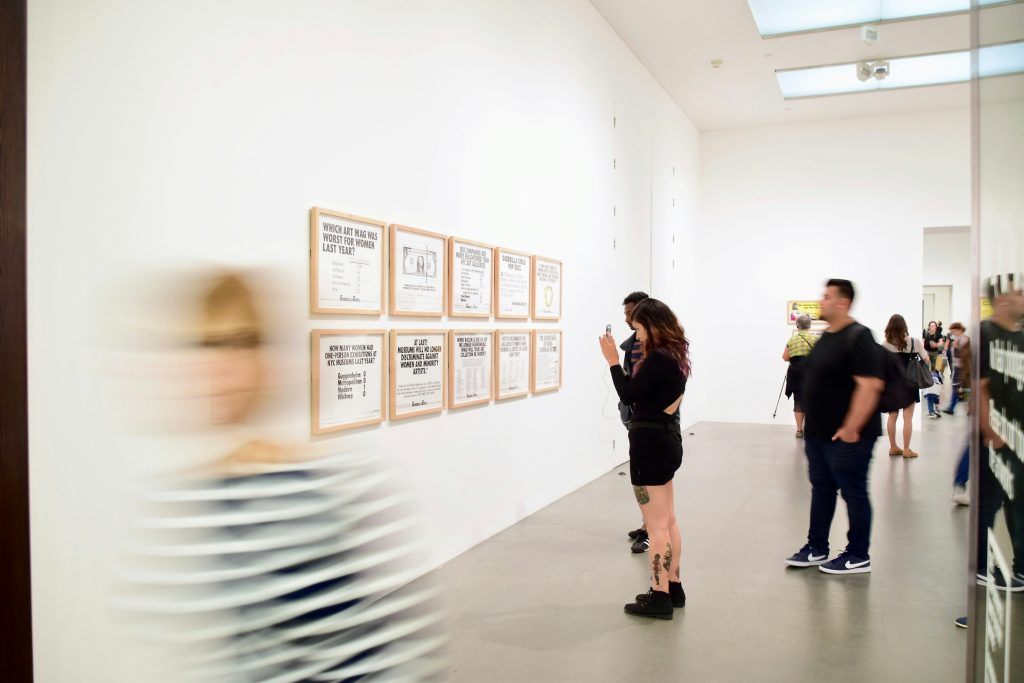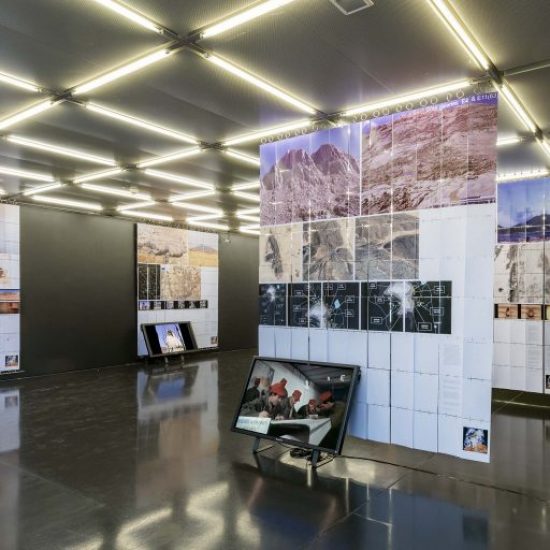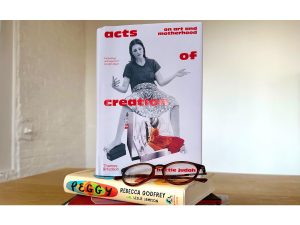Documenta is one of the most renowned contemporary art exhibitions in the world, held every five years in Kassel, Germany. It is a significant event in the art world, known for its innovative and often provocative displays. This article delves into the history, significance, and impact of Documenta, providing a comprehensive overview of this influential exhibition.
1. The Origins of Documenta exhibition
The Birth of an Idea
Documenta was first conceived by artist and curator Arnold Bode in 1955. Initially intended to be part of the Bundesgartenschau (Federal Garden Exhibition), Bode aimed to create a space where contemporary art could be showcased in post-war Germany. The idea was to reconnect Germany with modern art trends that had been disrupted by World War II and the Nazi regime.
The Inaugural Exhibition
The first Documenta took place in 1955 and was a resounding success. It featured works by modern masters such as Pablo Picasso, Henri Matisse, and Wassily Kandinsky, attracting over 130,000 visitors. The exhibition not only brought contemporary art back to Germany but also positioned Kassel as a cultural hub.
Evolution Over Time
Since its inception, Documenta has evolved significantly. Each edition is curated by a different artistic director, bringing fresh perspectives and themes to the exhibition. This evolution has allowed Documenta to remain at the forefront of contemporary art, continuously challenging and redefining the boundaries of artistic expression.
2. The Impact of Documenta Exhibition on Contemporary Art

Source: https://unsplash.com/photos/photo-of-person-standing-near-wall–a0D9LpcKV8
Documenta Exhibition and Influencing Artistic Trends
Documenta exhibition has a profound impact on contemporary art, often setting new trends and highlighting emerging artists. The exhibition serves as a platform for artists to experiment and present innovative works that push the boundaries of traditional art forms. This influence is seen in the way Documenta showcases a diverse range of media, including painting, sculpture, performance, and digital art.
Promoting Global Dialogue
One of Documenta’s key contributions is its promotion of global dialogue through art. By featuring artists from around the world, the exhibition fosters cross-cultural exchange and understanding. This global perspective is crucial in today’s interconnected world, allowing visitors to experience a variety of cultural expressions and viewpoints.
Shaping Art Criticism
Documenta also plays a significant role in shaping art criticism. The exhibition attracts critics, scholars, and art enthusiasts from around the globe, generating extensive discussions and debates about contemporary art. These conversations often influence the direction of art criticism, setting new standards and criteria for evaluating modern art.
3. Notable Editions of Documenta exhibition
Documenta 5: Harald Szeemann’s Vision
Documenta 5, curated by Harald Szeemann in 1972, is often regarded as one of the most influential editions of the exhibition. Szeemann introduced the concept of the “exhibition as a theme park,” where art was presented in a way that challenged traditional curatorial practices. This edition included a wide range of media and featured works that addressed social and political issues, setting a new standard for future exhibitions.
Documenta 11: Okwui Enwezor’s Global Perspective
Under the direction of Okwui Enwezor in 2002, Documenta 11 emphasized global art practices and post-colonial discourse. Enwezor’s approach expanded the geographic scope of the exhibition, including artists from Africa, Asia, and Latin America. This edition highlighted the importance of addressing historical and contemporary issues through art, making it a landmark in Documenta’s history.
Documenta 14: Learning from Athens
Documenta 14, curated by Adam Szymczyk in 2017, was notable for its dual-venue format, taking place in both Kassel and Athens. This edition explored themes of migration, identity, and cultural heritage, reflecting the socio-political climate of the time. The decision to hold part of the exhibition in Athens was a statement about the economic and political challenges facing Greece, and it underscored the role of art in addressing contemporary issues.
4. Documenta and Political Engagement
Art as a Political Tool
Documenta exhibition has a long history of using art as a means of political engagement. Many editions of the exhibition have featured works that address pressing social and political issues, from human rights and environmental concerns to immigration and globalization. This commitment to political engagement reflects Documenta’s belief in the power of art to provoke thought and inspire change.
Documenta 6: Media and Communication
The 1977 edition of the Documenta exhibition, curated by Manfred Schneckenburger, was significant for its focus on media and communication. This edition featured works that explored the impact of mass media on society and the ways in which information is disseminated. By highlighting these themes, Documenta 6 underscored the importance of critical engagement with media in the modern world.
Contemporary Political Issues
Recent editions of Documenta have continued this tradition of political engagement. For example, Documenta 13, curated by Carolyn Christov-Bakargiev in 2012, addressed issues such as war, trauma, and ecological crisis. The exhibition featured works that responded to global conflicts and environmental challenges, emphasizing the role of art in addressing urgent contemporary issues.
5. The Role of the Curator in Documenta
Shaping the Exhibition
The role of the curator is central to the success of Documenta exhibition. Each edition is shaped by the vision and expertise of its curator, who is responsible for selecting the artists and works to be featured. The curator’s choices reflect their understanding of contemporary art and their ability to create a cohesive and thought-provoking exhibition.
Curatorial Innovation
Documenta is known for its curatorial innovation, with each edition introducing new approaches to exhibiting art. Curators often experiment with unconventional display methods, site-specific installations, and interactive elements. These innovations contribute to Documenta’s reputation as a pioneering force in the art world.
Collaboration and Inclusivity
Collaboration and inclusivity are also key aspects of curating Documenta. Curators often work with a diverse range of artists, scholars, and cultural practitioners to create an exhibition that reflects multiple perspectives. This collaborative approach ensures that Documenta remains relevant and responsive to the changing dynamics of the contemporary art scene.

Source: https://unsplash.com/photos/three-men-and-woman-standing-while-looking-at-bulletin-board-Oqv_bQbZgS8
6. Visitor Experience at Documenta
Engaging with Art
Visiting Documenta is an immersive experience that encourages active engagement with art. The exhibition often features interactive installations and participatory works that invite visitors to become part of the artistic process. This emphasis on engagement makes Documenta a dynamic and memorable event.
Educational Programs
Documenta also offers a range of educational programs designed to enhance the visitor experience. These programs include guided tours, workshops, lectures, and panel discussions, providing visitors with opportunities to deepen their understanding of contemporary art. By offering these programs, Documenta fosters a culture of learning and critical thinking.
Accessibility and Inclusion
Accessibility and inclusion are important priorities for Documenta. The exhibition is committed to making contemporary art accessible to a wide audience, including people with disabilities. Efforts are made to ensure that exhibition spaces are physically accessible and that information is available in multiple formats. This commitment to inclusivity reflects Documenta’s belief in the importance of art for all.
7. Documenta’s Legacy and Future
Lasting Influence
Documenta’s legacy is evident in its lasting influence on the contemporary art world. Many artists who have participated in the exhibition have gone on to achieve international recognition, and the themes and issues explored at Documenta continue to resonate. The exhibition’s commitment to innovation and critical engagement ensures that it remains a vital and relevant force in the art world.
Future Directions
Looking to the future, Documenta will continue to evolve and respond to the changing dynamics of contemporary art. Future editions are likely to explore new media and technologies, address emerging global issues, and feature diverse voices from around the world. This forward-looking approach will ensure that Documenta remains at the cutting edge of artistic practice.
Documenta’s Global Impact
Documenta’s global impact cannot be overstated. As one of the most prestigious contemporary art exhibitions, it attracts visitors, artists, and scholars from around the world. This global reach helps to foster a deeper understanding of contemporary art and its potential to address complex social and political issues. By continuing to innovate and engage with the world, Documenta will undoubtedly maintain its status as a leading force in the art world.
References
- Green, C. (2005). “Documenta 1955–2005: A Brief History.” The Art Newspaper.
- Enwezor, O. (2002). “The Black Box: A Documenta Project.” Documenta 11_Platform 5: Exhibition. Hatje Cantz.
- Christov-Bakargiev, C. (2012). “The Brain: A Museum and an Aesthetic Analysis.” Documenta 13: The Guidebook. Hatje Cantz.
- Szymczyk, A. (2017). “Learning from Athens.” Documenta 14: Daybook. Prestel Publishing.




